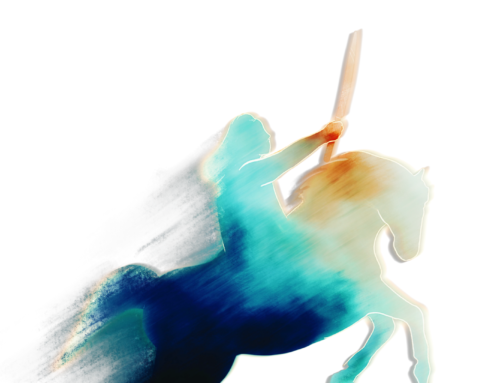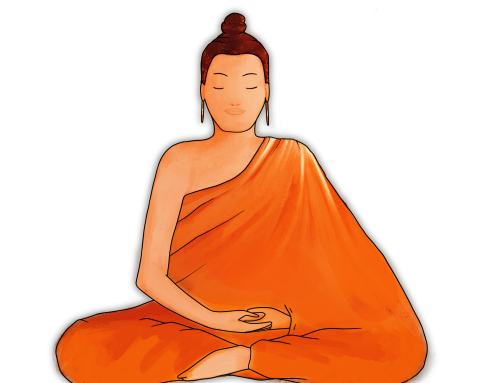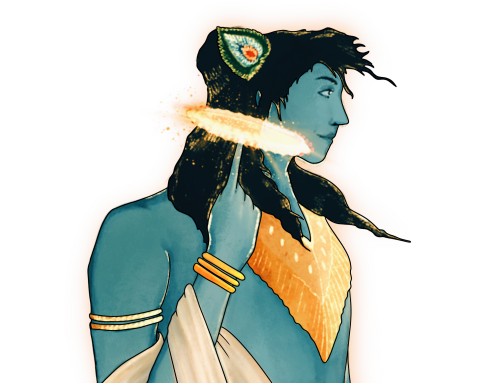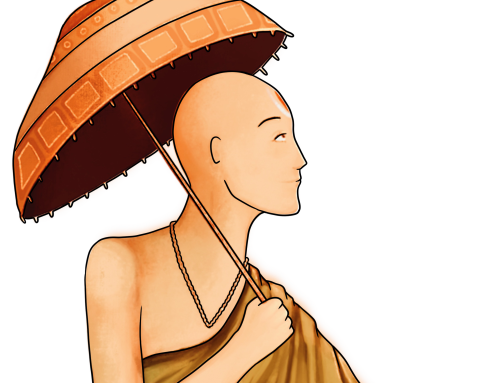
Vishnu is a major deity in Hinduism, one of the three primary deities comprising the Trimurti (the Hindu triad) along with Brahma and Shiva who are believed to represent the three aspects of the divine: creation, preservation, and destruction. Vishnu is the preserver and protector of the universe.
Vishnu is often depicted as having a blue or dark complexion, four arms, and holding shankha/a conch shell, chakra/a discus, gada/a mace, and padma/a lotus flower in his hands. Vishnu is said to have incarnated on Earth in various forms, known as avatara, in order to restore balance and order whenever it is threatened. His most well-known avataras called as Dashavatara or the 10 avataras are Matsya, Kurma, Varaha, Vamana, Narasimha, Parashurama, Rama, Krishna, Buddha and a future avatara called as Kalki.
Shankha
In Hinduism, the shankha is a sacred conch shell that is associated with the God Vishnu. It is often depicted in art as one of the objects held in Vishnu’s four hands. The shankha is believed to have auspicious and purifying properties, and the sound it produces is thought to represent the sound of the universe. In Hindu tradition, the shankha is used to announce the beginning and end of auspicious events, such as puja ceremonies and weddings.
In the Hindu epic the Mahabharata, the conch “Panchajanya” is held by Krishna, who is an avatar of Vishnu, to blow a mighty blast that signals the start of a great battle. The sound of the conch is said to be so powerful that it it can shatter mountains and bring fear in the enemies of righteousness and to bring victory to those who hear it.


Chakra
The Sudarshana Chakra is a powerful and divine weapon that is wielded by the Hindu god Vishnu. It is a spinning disc with 108 serrated edges that is said to be able to cut through anything in its path. Vishnu uses the Sudarshana Chakra to protect the universe and restore order when it is threatened by chaos. It is a powerful spiritual symbol that represents the ultimate triumph of good over evil.
Gada
Gada is a type of mace or club, a weapon that is associated with the god Vishnu and his incarnations. It is a traditional weapon used in the martial art of malla-yuddha, which originated in ancient India. Gada is associated with strength, power, and protection.


Padma/Kamala
Vishnu is also associated with the lotus flower, which symbolizes purity, spiritual awakening and the unfolding of the soul. He is often depicted standing or sitting on a lotus flower, or holding a lotus flower in his hand. The symbolism says that, just as a lotus flower grows out of the mud and emerges as a beautiful and pure blossom, so too can the soul rise above the limitations of the material world and attain spiritual enlightenment.
Adishesha
In Hinduism, Shesha is a primordial serpent God who is believed to be the eternal resting place of the God Vishnu on the cosmic ocean. He is the king of all serpents, and is often depicted as having multiple heads and being endlessly coiled and hence also called as ‘Ananta’ which means “infinite” or “eternal” in Sanskrit. Shesha supports the entire universe on his hoods.


Garuda
In Hinduism, Garuda is the mount (vahana) of the God Vishnu. Garuda is depicted as a large bird with golden feathers, and is said to have the ability to defeat even the most powerful of serpents. Garuda is an ardent devotee of God Vishnu. He is known for his courage, strength, speed, bravery and as a divine protector.
As the mount of Vishnu, Garuda is associated with the pursuit of righteousness and the protection of dharma (the moral order of the universe).



